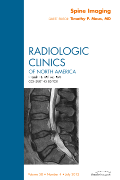
RADIOLOGIC CLINICS OF NORTH AMERICA
Scope & Guideline
Shaping the Future of Radiology Through Insightful Research.
Introduction
Aims and Scopes
- Rheumatology Imaging:
The journal emphasizes the role of various imaging modalities in diagnosing and managing rheumatic diseases, showcasing advancements in techniques like MRI, ultrasound, and dual-energy CT. - Breast Imaging:
A significant focus on breast imaging encompasses conventional and advanced techniques, including MRI and AI applications, addressing screening, diagnosis, and management of breast cancer. - Cardiac Imaging Innovations:
The journal explores cutting-edge imaging approaches in cardiology, including CT angiography and molecular imaging, highlighting their applications in both congenital and acquired heart diseases. - Artificial Intelligence in Radiology:
A core area of research involves the integration of artificial intelligence into radiology practices, enhancing diagnostic accuracy, workflow efficiency, and patient outcomes across various imaging disciplines. - Transplant Imaging:
The journal covers the imaging aspects of solid organ transplantation, detailing preoperative assessment and postoperative complications, thus contributing to improved patient care in transplant medicine. - Oncologic Imaging:
A strong emphasis on oncologic imaging provides insights into the latest techniques for diagnosing and monitoring various malignancies, including PET imaging and radiogenomics. - Emergency Radiology:
The journal addresses the critical role of imaging in emergency settings, presenting advancements in multi-energy CT and other modalities for acute trauma and urgent care situations.
Trending and Emerging
- Dual-Energy and Photon Counting CT:
There has been a marked increase in articles discussing dual-energy and photon counting CT technologies, highlighting their transformative potential in various clinical applications, including oncology and emergency radiology. - AI and Machine Learning Applications:
The integration of artificial intelligence and machine learning in imaging practices is rapidly gaining traction, with numerous publications addressing its implications for diagnostic accuracy and workflow optimization. - Advanced Techniques in Musculoskeletal Imaging:
Emerging themes in musculoskeletal imaging, particularly concerning rheumatology, showcase advances in high-resolution imaging techniques that enhance the evaluation of complex conditions. - Molecular Imaging and Precision Medicine:
An increasing focus on molecular imaging techniques, particularly in oncology, reflects a trend towards precision medicine, where imaging plays a crucial role in personalized treatment planning. - Comprehensive Imaging of Transplant Patients:
The expanding field of imaging in organ transplantation is gaining attention, with a growing number of articles addressing pre- and post-transplant imaging strategies to improve patient outcomes.
Declining or Waning
- Traditional Radiology Techniques:
There is a noticeable decline in publications centered around conventional radiological techniques, as the field increasingly shifts towards advanced imaging technologies and methodologies. - General Radiology Concepts:
The general discussions on radiology practices and non-specialized imaging approaches are becoming less frequent, with a stronger focus now on niche areas and advanced applications. - Pediatric Imaging:
Although pediatric imaging remains important, the frequency of publications dedicated solely to this subfield has decreased, possibly due to the growing emphasis on adult-focused imaging advancements. - Basic Imaging Techniques and Protocols:
The journal has gradually moved away from publishing basic imaging protocols and techniques, preferring to focus on innovative approaches and advanced technologies that enhance diagnostic capabilities.
Similar Journals
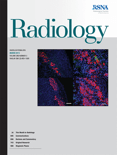
RADIOLOGY
Pioneering insights in radiology and nuclear medicine.RADIOLOGY, published by the Radiological Society of North America (RSNA), stands as a premier journal in the fields of radiology, nuclear medicine, and imaging. Established in 1945, this esteemed journal has consistently provided groundbreaking research and insights, helping to shape advancements in diagnostic imaging and therapeutic interventions. With a commendable Q1 ranking in its category and a remarkable 99th percentile ranking in Scopus, RADIOLOGY continues to be a pivotal resource for clinicians, researchers, and students alike. Although not an Open Access journal, it offers a wealth of high-quality peer-reviewed articles that contribute significantly to the ongoing discourse in the medical community. With a strong focus on innovative techniques and the integration of new technologies, RADIOLOGY remains essential for professionals aiming to stay at the forefront of medical imaging practices.
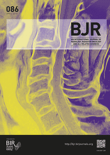
BRITISH JOURNAL OF RADIOLOGY
Exploring New Frontiers in Nuclear Medicine and ImagingBritish Journal of Radiology is a leading peer-reviewed journal published by the British Institute of Radiology, dedicated to advancing the field of radiology, nuclear medicine, and imaging. With a prestigious history dating back to 1945, this journal is at the forefront of disseminating cutting-edge research and innovations that significantly impact clinical practice. Currently enjoying a Q1 ranking in the field of radiology and Q2 in general medicine for 2023, it is recognized for its rigorous standards and high-quality content, ranking #87 out of 333 in Scopus for specialties related to Medicine, Radiology, Nuclear Medicine, and Imaging, placing it in the 74th percentile. Researchers, professionals, and students are encouraged to engage with the latest findings and comprehensive reviews presented within its pages, which contribute not only to academic discourse but also to the evolution of practice in the wider medical community.
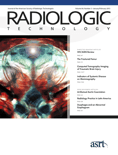
Radiologic Technology
Innovating the Future of Medical ImagingRadiologic Technology, published by the American Society of Radiologic Technologists, serves as a pillar in the fields of radiology, nuclear medicine, and imaging, providing critical insights and advancements that shape the practice and profession. With an ISSN of 0033-8397 and E-ISSN 1943-5657, this esteemed journal has been contributing to the scholarly literature since 1963 and continues its commitment to quality research well into 2024. Although it is not an open-access journal, Radiologic Technology is recognized for its robust contributions, holding a Q3 quartile ranking in both "Radiological and Ultrasound Technology" and "Radiology, Nuclear Medicine, and Imaging," according to the latest 2023 category quartiles. Its Scopus rankings highlight its standing within the field, offering thought-provoking articles that encourage further exploration and innovation. As the landscape of medical imaging evolves, this journal remains a crucial resource for researchers, practitioners, and students aiming to enhance their understanding of radiologic technologies and their applications in modern healthcare.
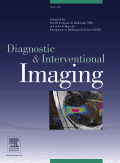
Diagnostic and Interventional Imaging
Empowering Healthcare through Advanced Imaging KnowledgeDiagnostic and Interventional Imaging, published by Elsevier Masson, stands as a prominent journal in the fields of Radiology, Nuclear Medicine, and Imaging. With a significant impact factor and a reputation for high-quality research, this journal is dedicated to advancing the understanding and application of diagnostic and interventional imaging techniques. It has achieved an impressive Q1 ranking across multiple categories including Medicine (miscellaneous) and Radiological and Ultrasound Technology, demonstrating its esteemed position within the academic community. The journal features cutting-edge studies and reviews, reflecting the latest innovations and practices from 2012 to 2024. Researchers, healthcare professionals, and students alike can look forward to accessing valuable insights that drive forward the discipline and improve patient outcomes, as evidenced by its robust Scopus rankings placing it among the top journals in its domain.

Egyptian Journal of Radiology and Nuclear Medicine
Bridging Research and Practice in RadiologyThe Egyptian Journal of Radiology and Nuclear Medicine, published by Springer, is a premier open access journal that has provided valuable insights and advancements in the fields of radiology and nuclear medicine since its initiation in 2010. With an E-ISSN of 2090-4762, this journal is dedicated to bridging the gap between research and clinical practice, allowing for the dissemination of high-quality research to a global audience. Situated in Germany, it enjoys a robust reputation in the academic community, evidenced by its categorization in the Q3 quartile for 2023, as well as its Scopus ranking, where it holds a position of #225 out of 333 in the domain of Radiology, Nuclear Medicine and Imaging, placing it in the 32nd percentile. The journal's open access model ensures that researchers, professionals, and students can freely access innovative studies, reviews, and case reports that discuss the latest methodologies, technological advancements, and clinical outcomes in radiology and nuclear medicine. As it looks toward its converged years spanning from 2010 to 2024, the Egyptian Journal of Radiology and Nuclear Medicine continues to be an essential resource for advancing knowledge and fostering ongoing collaboration in these critical fields.

Japanese Journal of Radiology
Empowering Knowledge in Radiology Through Open AccessThe Japanese Journal of Radiology, published by SPRINGER, serves as a premier platform for disseminating cutting-edge research and clinical advancements in the fields of radiology, nuclear medicine, and imaging. With an ISSN of 1867-1071 and E-ISSN 1867-108X, this journal has established itself as a vital resource for practitioners, researchers, and students alike. Renowned for its high-quality peer-reviewed articles, it currently enjoys a respectable impact factor within the Q2 category of Scopus rankings, placing it in the 69th percentile among 333 journals in its field. The journal has seen consistent convergence of research from 2009 to 2024, further underscoring its commitment to advancing the understanding of radiological practices. Importantly, the journal offers Open Access options to facilitate widespread dissemination of knowledge, ensuring that vital research reaches its audience without barriers. Addressed in Japan, the Japanese Journal of Radiology plays a critical role in enhancing the global discourse on medical imaging, making it an essential resource for anyone engaged in this dynamic field.
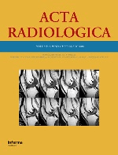
ACTA RADIOLOGICA
Unveiling New Perspectives in Radiological AdvancementsACTA RADIOLOGICA, published by SAGE Publications Ltd, is a premier journal dedicated to the evolving field of radiology, bridging the gap between clinical practice and research from its inception in 1921 to its anticipated continuation until 2024. With an ISSN of 0284-1851 and an E-ISSN of 1600-0455, this esteemed journal holds a significant position in the academic landscape, reflected in its 2023 rankings as Q3 in several categories, including Medicine (miscellaneous), Radiological and Ultrasound Technology, and Radiology, Nuclear Medicine and Imaging. Although currently not an open-access journal, ACTA RADIOLOGICA offers robust subscription options allowing a wide readership among researchers, healthcare professionals, and students striving to stay at the forefront of radiological advancements. The journal publishes original research, reviews, and clinical studies that contribute to the understanding and application of imaging technologies, underscoring its vital role in shaping modern medical practices.
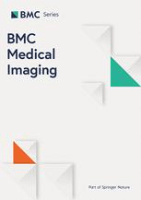
BMC MEDICAL IMAGING
Advancing the Future of Radiology and Imaging Technologies.BMC Medical Imaging is a premier open-access journal dedicated to advancing the field of radiology, nuclear medicine, and imaging technologies. Published by BMC in the United Kingdom, this journal serves as a vital resource for researchers, clinicians, and students, fostering a collaborative environment for sharing innovative findings and methodologies in medical imaging. With a commendable impact factor and an impressive Scopus ranking within the top 35% of its category, BMC Medical Imaging provides a platform for high-quality research to be disseminated widely and freely since its inception in 2001. The journal aims to cover a diverse array of topics, from advanced imaging techniques to their clinical applications, enhancing the understanding and effectiveness of diagnostic practices. By contributing to the body of knowledge and facilitating open access to research, BMC Medical Imaging plays a pivotal role in shaping the future of medical imaging and improving patient care.
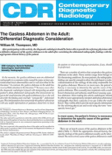
Contemporary Diagnostic Radiology
Exploring the Future of Imaging TechniquesContemporary Diagnostic Radiology is a pivotal journal in the field of medical imaging and radiology, published by Lippincott Williams & Wilkins. With an ISSN of 0149-9009 and an E-ISSN of 1938-1395, this journal serves as an essential platform for disseminating high-quality research and advances in diagnostic radiology and related disciplines. While it is categorized in the lower quartiles (Q4) for its performance in the 2023 rankings in both Neurology, Radiology, Nuclear Medicine and Imaging, and Surgery, its focus on emerging technologies and methodologies in imaging continues to provide valuable insights for practitioners and researchers alike. The journal’s scope includes innovative diagnostic tools, imaging techniques, and case studies, fostering collaboration and knowledge sharing in the medical community. Although it does not offer open access options, its commitment to contributing to the ongoing dialogue in clinical imaging is undisputed, making it an essential resource for professionals seeking to stay abreast of current trends and research in the rapidly evolving landscape of diagnostic radiology.

Imaging
Elevating Standards in Imaging ResearchImaging, published by AKADEMIAI KIADO ZRT, is an esteemed open-access journal dedicated to the field of medical imaging, established in 2020. With an E-ISSN of 2732-0960 and based in Budapest, Hungary, this journal provides a vital platform for the dissemination of cutting-edge research and advancements in imaging techniques, especially in the realms of radiology, nuclear medicine, and ultrasound technology. While currently positioned in the Q4 category across multiple medical specialties, the journal continues to strive for improvements in visibility and impact, contributing to the evolving discourse in medical imaging. The journal aims to facilitate an inclusive and collaborative environment for researchers, professionals, and students, inviting them to share their findings and insights to enhance the field's development. With open-access availability since its inception, Imaging ensures free and easy access to its content, fostering a greater understanding and appreciation of innovative imaging practices worldwide.